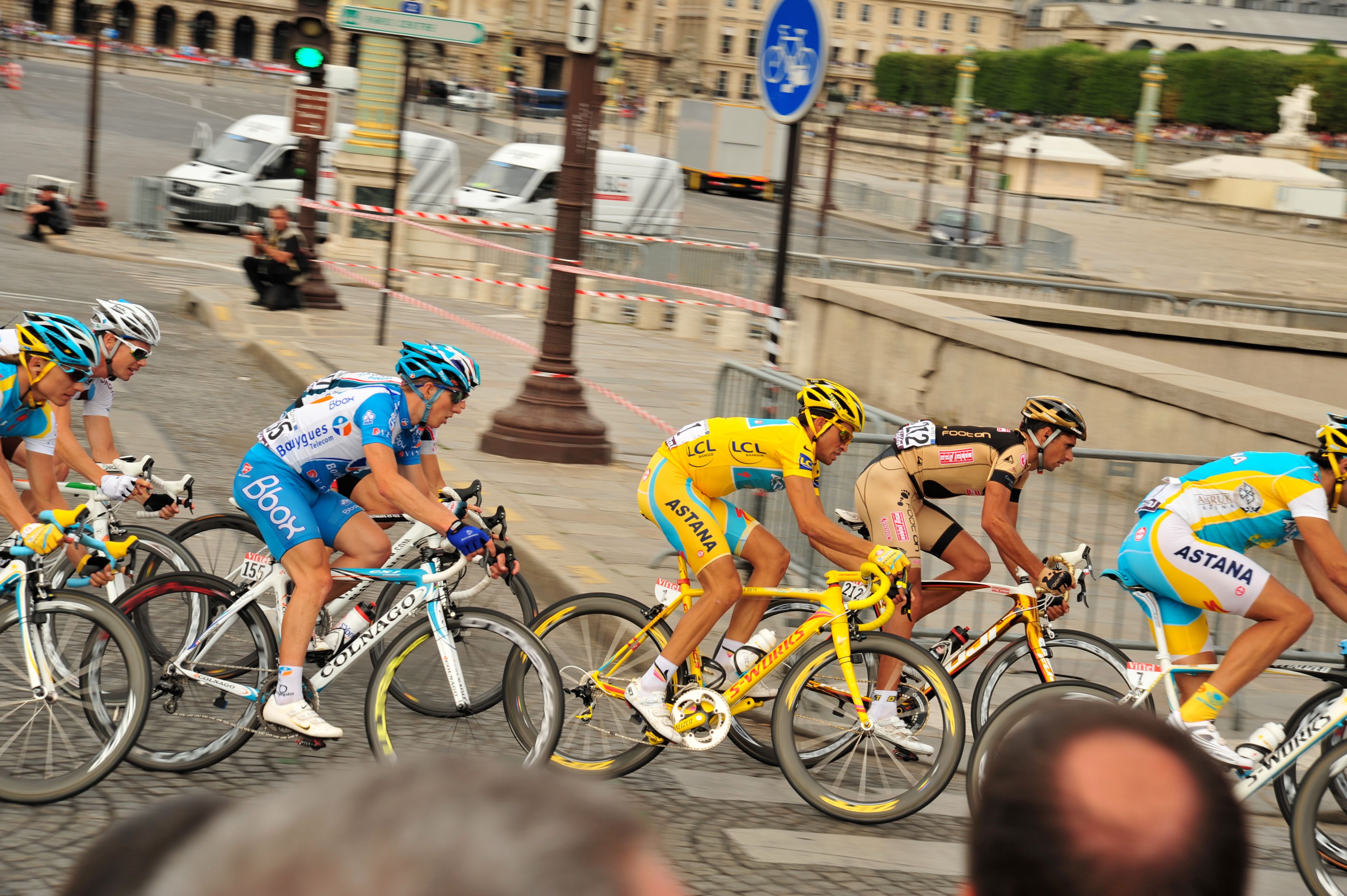Performance Enhancing Drugs in Sports
Superheroes
Black Panther has crossed the $624 million mark six weeks after its much anticipated arrival at the box office, edging out another superhero movie, The Avengers with its $623 million in 2012. With these numbers, I think it’s safe to say we are fascinated with superpowers.
An understatement.
.jpg)
The fantasy superhero, Batman
Source: William Tung
Superpower simply means having ‘super power’, a greater strength or influence compared to your contemporaries. In popular culture, much has been made out of it, and I’m not talking about only money. Super ability run the gamut from extraordinary strength to ‘special abilities.’ But against our wishes, they are all fantasies though. A lot of childhood innocence has been broken by the reality of an ‘imaginary superhero.’ Believe me, I’m one of them. My favorite super hero was and is Batman. The day I learned he wasn’t real, I cried my heart out.
The world as I knew it was in danger. It needed saving.
Then came the next best thing, athletes.
An athlete (American and British English) or sportsman or sportswoman (British English) is a person who is good at a sport and competes in one or more sports that involve physical strength, speed or endurance.
Are they superheroes?
No, but they are the closest thing to it in the real world. And many seem to think so. The most famous ones are feted, pursued and obsessed over, and even worshiped by their followers. Their jerseys and boots sell by the millions.
Maradona, the popular Argentine World cup winner had the Church of Maradona opened in his honor.

Diego Armando Maradona
Source: Armando César Tovar
Their endorsement deals with popular brands runs into millions of dollars. They receive the royal treatment everywhere and theirs are regarded as the ultimate height a human can attain to achieve. I’m an ardent sports follower and I’ve been known to show more than the usual enthusiasm on occasion.
People at odds have been known to set aside grievances at the altar of their ‘idols’ and for the sake of their countries during an international tournament. Fans have lost their lives out of shock or depression or as a result of other factors because of the result of a sporting event. About two weeks ago, a twenty-four-year-old ‘staunch Chelsea supporter lost his life following their defeat to Barcelona in their round of sixteen tie of the Champions League. As an ardent Barcelona fan, I celebrated the result and went cold all over when I heard the news of his death the next day.
Which is why I get it, I totally do.
I understand why these athletes would go to any length to ensure that the ‘halo of divinity’ conferred on them by their ardent fans never diminish. For this, many athletes turn to performance-enhancing drugs.
What is a Performance Enhancing Drug (PED)?
Performance-enhancing drugs are substances that can be used to boost performance over a certain length of time. (Sadly, it doesn’t last forever) It has created a field in the sporting world, doping. Doping in sports is the process whereby athletes use banned performance-enhancing drugs to boost their performance and attain the glory in victory.
Performance enhancing drugs not only exists in sports but in academics as well. Nootropics are substances known to improve cognitive ability and boost academic performance. Performance enhancing drugs are also used in the military to boost performance and create an advantage.
The existence and use of performance-enhancing drugs are no longer surprising but instead creates a shroud of suspicion over any extraordinary performance, leeching out the joy of victory for the competitor (when he is caught) and the fans. (when they find out their ‘idols’ are flesh and blood after all)
History
One would have thought the use of performance-enhancing drugs was one of the evils that came with advances in science and technology. Instead, it sports a rich history dating back centuries. The evolution of sports and the use of performance-enhancing drugs are brothers of the same parents.
Centuries back, the countries participating in a sporting event picked the fittest and strongest to represent them as was and still is expected. These chosen ones would be fed special roots and herbs to give them an advantage over their competitors. This conferred an advantage and fits in with our definition of a performance-enhancing drug.
But it wasn’t called doping, not then. It was simply a way to win.
In 1807, Abraham Wood, a British walk racer, admitted to taking Laudanum to stave off sleep during intense, prolonged competition. Romans of ancient past were known to imbibe in ‘special solution’ before a tasking activity.
By April 1877, the walk racing and cycling distance were stretched to over five hundred miles and increased in popularity during this time, drawing spectators from far and near and increasing the pressure on the competitors to win. As the popularity surged, so did the prizes. It became normal to for the members of the team of a racer to inject the competitor with a quick shot of nitroglycerin.

Tour De France, 2005
Source: Emilio Labrador
Nitroglycerin dilates or opens up the blood vessels, increasing blood flow and oxygen and nutrient delivery to tired or starved muscles. Medically, nitroglycerin is used in the treatment of hypertension and to relieve symptoms of heart disease caused by low blood supply and oxygen perfusion, known as myocardial infarction. Repeated intake of nitroglycerin at high doses causes severe headaches and these athletes have been known to faint following the race, lose their lives before the finish line and suffer hallucinations from extreme fatigue.
"I cannot go on with safety, for there is a man chasing me around the ring with a knife in his hand."
American champion Major Taylor, 1896.
In the 1960s, the world of performance enhancing drugs turned towards anabolic steroids with the United States physician for the weightlifting team paving the way. More disasters followed as doping in sports became a norm as athletes sought a way to win at all cost regardless of the risk. Public outcry against this practice began to increase however and doping became an offense deserving of punishment.
The Goldmann Dilemma
This was one of the questions posed to athletes during a survey by a publicist Bob Goldmann. Would you risk taking a dangerous performance-enhancing drug in return for victory?
From the reputation of many feted athletes that eventually fell from grace and the tarnished reputation of the sport of athletics as a whole, I think you can easily guess the answer many athletes gave to that question.
Classes of performance-enhancing drugs
- Anabolic drugs
- Stimulants
- Ergogenic aids, or athletic performance-enhancing substances
- Human biomolecules
- Adaptogens
- Nootropics
- Painkillers
- Sedatives and anxiolytics
- Blood boosters
- Gene doping agents
- Diuretics
- Human Growth hormone
Anabolic drugs
Androgens are steroid hormones, a type of chemical compound that can be synthetic or natural, responsible for the development and progression of male characteristics. It controls the growth and maintenance of the male sexual organs, body hair (pubic hair, facial hair, abdominal hair, etc) muscular development through increased protein production, development of the voice box or Adam’s apple, broadening of the shoulders, development of angular facial features, etc.
Anabolic drugs or more accurately, anabolic steroids are androgenic substances that mimic the actions or have the same effect as the natural androgenic hormone like testosterone.
Chemistry of Anabolic steroids
Hormones are a special class of biological compounds that are secreted into the bloodstream by the cells that produce them to exert a function at distant organs to exert influence on the physiological and physical development of the human form.
Steroid hormones are hormones with a distinct structural formula. Anabolic steroids are produced by the gonads and control the development of the male form.

Methyltestosterone
Source: Harbin
Examples of naturally occurring anabolic steroids include
Testosterone
Dehydroepiandrosterone (DHEA),
Dehydroepiandrosterone sulfate (DHEA-S),
Androstenedione (A4)
Androstenediol (A5)
Testosterone is the major naturally occurring anabolic steroid.
Synthetic anabolic steroids
Boldenone
Testosterone
Dromostanolone
Dihydrotestosterone
Methenolone
Norethandrolone
Oxymetholone
Clostebol
Dehydroepiandrosterone DHEA
Fluoxymesterone
Androstenedione
Mesterolone
Methyltestosterone
Oxandrolone
Dehydrochlormethyl-Testosterone
Epitestosterone
Methandienone
Nandrolone
Oxymesterone
Stanozolol
Physiology of Anabolic Steroids
The physiological effect of anabolic steriod is the foundation of its use as a performance-enhancing drug
- Increased protein production- Anabolic steroids increases proteins synthesis especially in the muscles, thereby increasing muscle musculature.
- Increased basal metabolism- Anabolic steroids cause an increase in the basal metabolic rate. The increase in basal metabolic rate is directly linked to the increased protein synthesis, increasing basal cellular activity.
- Increased bone matrix- Anabolic steroids caused an increased calcium retention in the gastrointestinal tract. This action causes a proportional increase in bone matrix, density, and strength.
- Effect on red blood cell- Anabolic steroids increases the red blood cell concentration. This action is not as a direct effect on the bone marrow to increase red blood cell production but is linked to the increased protein synthesis. The increased basal metabolic rate increases the rate of oxygen uptake and stimulates increased red blood cell production.
- Effect on sodiumand water retention- Anabolic steroids causes an increase in sodium retention and by the influence of osmotic pressure, water retention as well. This increased water and sodium also increases blood volume and blood supply to the highly active cells.
Physiology of anabolic steroid as a performance-enhancing drug
The overall effect of anabolic steroids to increase protein synthesis, red blood cell concentration, water volume, musculature, and strength has a terrifyingly improved effect on an athletes performance.
Side Effects
The advantages of anabolic steroid also have a concurrent side effect as well.
- An increased risk of hypertension.
- A decreased concentration of high-density lipoprotein (‘good lipoprotein’)
- An increased concentration of low-density lipoprotein (‘bad lipoprotein’)
- A decreased testicular function because the presence of circulating synthetic anabolic steroid reduces the secretion of natural anabolic steroids.
All these effects pose an increased risk of heart attacks, strokes, and infertility. In the female athletes who use anabolic steroids as a doping drug of choice, the side effects are much worse.

Former US sprinting star, Marion Jones
Source: Thomas Faivre-Duboz
The history and evolution of sports and performance enhancing drugs are intricately linked. It would be almost impossible to dislodge the two as long as the ‘Goldmann effect’ remains. Athletes have a lot to gain and a lot to lose by using an anabolic steroid or other performance-enhancing drugs. But for many athletes, the gains far outweigh the risks.
But I believe, from a purely educational and objective standpoint that the risks far outweigh the gains. Just ask the likes of Marion Jones, Dwain Chambers, Justin Gatlin and Lance Armstrong. The fall from glory to shame is like the fall of a floating, numb body from a greater height.
Possibly and sometimes irrevocably fatal.
(To be continued. Performance enhancing drug: the human growth hormone)
References
Anabolic steroids
Athletes banned for steroid use
Athlete
'Black Panther' Becomes Highest-Grossing Superhero Film Ever
Chemistry and structure of Anabolic Steroids
Drugs in sport: Anabolic steroids
Doping in sports
Emmanuel Offin collapsed and died while on his way home after watching Wednesday's Champions League meeting between Barcelona and Chelsea
Maradona
Nitroglycerin
Performance Enhancing Substances
Superpower
Guyton, A. C., & Hall, J. E. 1. (2006). Textbook of medical physiology (11th ed.). Philadelphia : New Delhi: Elsevier Saunders.
All these complex chemical names... Difficult to pronounce for me. But athletes are now being banned if caught using enhancing performance drugs. Would you say the association is right to do so?
thanks for dropping by. I plan to address that in the next post.
Apart from the danger posed by these drugs. It confers an unfair advantage over clean competitors and sets a bad precedent. It now comes down to, who could afford to take in a more powerful drug?
An example is Russia...
my next post.
Hmm i see... I would be waiting for your next post to read more about this. Thanks for the reply.
It could as well turn into something else i mean the competition since they would want to prove who can take the most powerful drug and handle it.
Thanks. I will try to make it as detailed as possible.
@vanessahampton - this is a great post on doping and performance enhancing drugs or PEDs as you've explained. It dd not used to be that big of a deal, but now it is. Upovoted!
Thank you so much for the encouragement.
Tell me you teach either biology or chemistry.
Nice article by the way!
Thanks. lol, both.
How did you guess (insert emoji here)
Good article @vanessahampton ! Nitroglycerin enhanced athletes, who would have thought :)
Thanks, really.
Yes, it does and it's dangerous too. It's amazing what length people would go for what they want.
You're teaching me astronomy through your posts.
Is glucose a sport performance drug?
This oost is generating a lot of questions and i've added this question to my to-do post.As of today's date, glucose is not on the list of banned substance listed by the world antidoping agency. The rules change all the time, depending on certain conditions I will address later.
Thank you
A true sportsman is one that is: fair, hard working and professional. Those that take drugs because of the pressure of competing at the top are cheaters and unprofessional and therefore not true sportsmen.
Well said
Very nice and articulated piece, enhancement drugs with all its temporal benefit is harmful to the body in a long run. Chi keep on with the good work.
Thanks, and for your support too. I always notice your upvotes.
Being a sort of fitness addict myself i know pretty well the world of PED, in bodybuilding to be more exact... I've seen plenty of people using them without any knowledge about the dangers of such drugs... they ranged from simple beta-adrenergic like clenbuterol, insulin, HGH, testosterone, Dianabol, damn I have all sorts of names in my head!
I saw some comments saying that athletes get banned if caught... yes, they do, but there is huge amounts of money behind sports, they change the results whenever they want to... the world of sports is full of corruption, unfortunately !
True, that's why they take the risks anytime. Thanks for dropping by.
Nice piece, am not surprised yet, keep moving and giving us nice write up, kudos !!!
thanks for your kind words